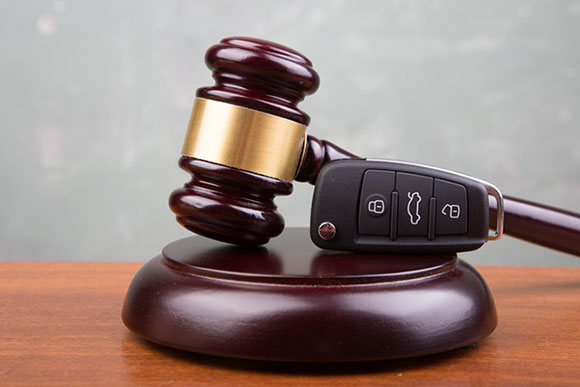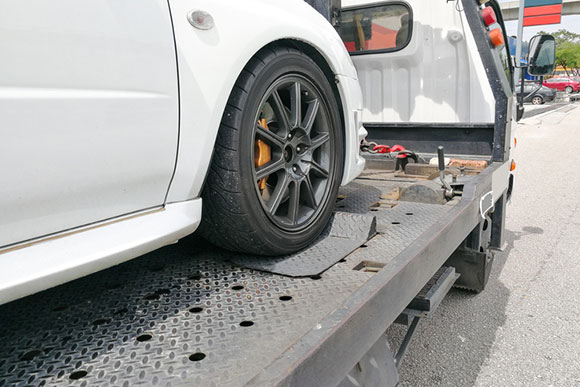You might think that you have to give up everything that you own to file for bankruptcy. That isn’t true. Bankruptcy laws give bankruptcy filers exemptions. The exemptions allow people to keep things that are the most important to them. They allow you to keep the things that you need the most to live, go to work, and carry out your business. Cars are one of the most important exemptions in Nevada bankruptcy law.
When we meet with people who are considering filing for bankruptcy, they often want to know if they can keep their car when they file for bankruptcy in Nevada. In many cases, the answer is yes. However, you will likely want to work with an experienced bankruptcy lawyer in Las Vegas to ensure you are able to do so.

The best method to keep your car during a bankruptcy proceeding depends on whether you own your vehicle outright or you have debt on your vehicle. If you own your vehicle outright or even if you have some debt on your vehicle, you may be able to protect your vehicle under a standard exemption.
If you’re behind in your payments, you may be able to reaffirm your vehicle loan or bring a motion to redeem the vehicle. The best course of action depends on the value of your car, the amount that you owe, and what your lender is willing to agree to.
If you own your vehicle free and clear right now, you can claim an exemption in Nevada bankruptcy law. In Nevada, you can keep a car in bankruptcy up to $15,000. If your vehicle is worth $15,000 or less, you can claim an exemption to cover the cost of the vehicle, and then you keep the car. Nevada Revised Statutes 21.090(1)(f) and Nevada Revised Statutes 21.090(1)(p) list the rules for vehicle exemptions in Nevada bankruptcy law. If you’re disabled, you can claim a vehicle exemption up to an unlimited amount.
The car exemption in Nevada bankruptcy law applies to the equity in the vehicle. That means if you have a car that’s worth more than $15,000, if you have equity that’s less than $15,000, you can protect the vehicle as part of your vehicle exemption. The purpose of the vehicle exemption is to allow you to keep the vehicle that you need to drive up to a certain value.
The car exemption is one of many exemptions in Nevada bankruptcy law. There’s also a generous exemption for your home. Exemptions allow you to keep the things that you need the most. In exchange for wiping out your debts, you give up the property that isn’t exempt. The car exemption allows you to keep your vehicle as long as you don’t claim more than $15,000 for the value of the vehicle. Also, remember that married couples filing for bankruptcy can double the exemptions that apply to jointly-owned property.
A reaffirmation agreement with your car lender is a possibility if you don’t own your vehicle outright. A reaffirmation of the debt is your promise to pay the car loan according to its terms. Your car stays separate from the bankruptcy proceeding. The car is no longer part of the bankruptcy, and the bankruptcy proceeding does not impact it. If you default on your loan payments after the reaffirmation, the leaseholder can repossess your car.

If you want to enter into a reaffirmation agreement to keep your car out of bankruptcy, the bankruptcy trustee must approve it. Some trustees don’t like reaffirmation agreements. Others will approve them if the lender agrees to a lower rate or balance. To get a reaffirmation agreement, you must show that you can make the payments for the vehicle.
Another way to save your car during bankruptcy is by making a motion to redeem your vehicle. Redeeming your vehicle allows you to purchase it from your lender for its retail value at the time you file. The value that matters is the value of the vehicle at the time you file for bankruptcy. It’s likely a lower amount than when you purchased the vehicle.
To redeem your car, you make a motion to the court as part of the bankruptcy proceeding. You must present evidence of the value of the car. Most courts want to see information from Kelley Blue Book or the National Auto Dealers Association. You must also show that you want to keep the vehicle for personal or household use. You must serve a copy of the motion on the car lender.
If the court approves your motion to redeem your car, your car lender must accept a lump sum payment for the value of the car. In the end, you end up with title to the vehicle free and clear. To redeem your car, you must have the funds available to pay your lender for the fair market value of your car. A motion to redeem may be your best bet when your vehicle is worth less than your loan.
You may have heard of the concept of pay and drive in bankruptcy law. The law allowed drivers to keep their vehicles as long as they stayed current on payments. Pay and drive hasn’t been a part of bankruptcy law since 2005. You must pursue one of the other options to keep your vehicle in a Nevada bankruptcy.
Are you thinking about filing for bankruptcy? Are you worried about keeping your vehicle? Our Las Vegas bankruptcy attorneys can help. We can help you understand what you can do to keep your car, and we can help you take the right steps to save your vehicle from bankruptcy. Call us today to begin working on your case.